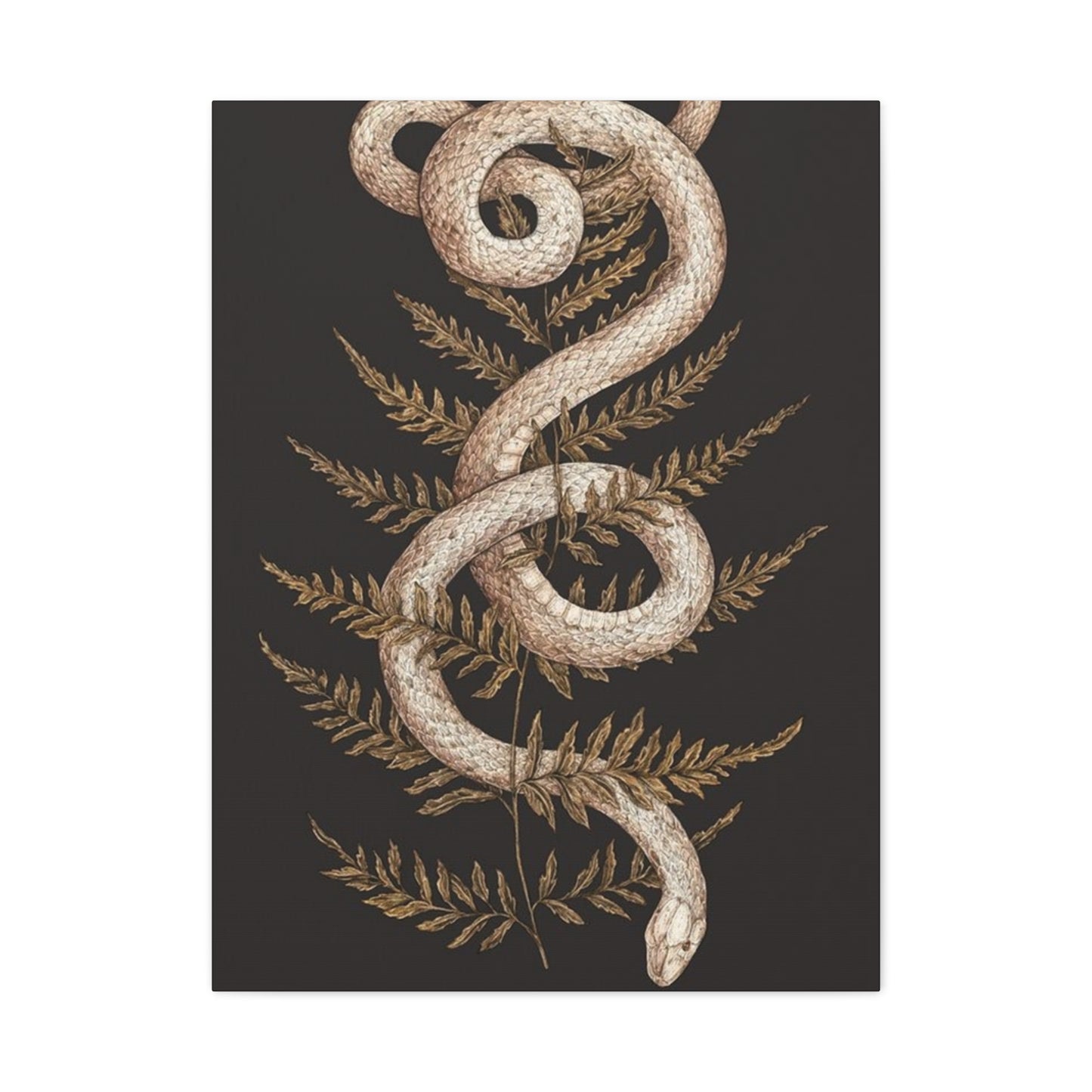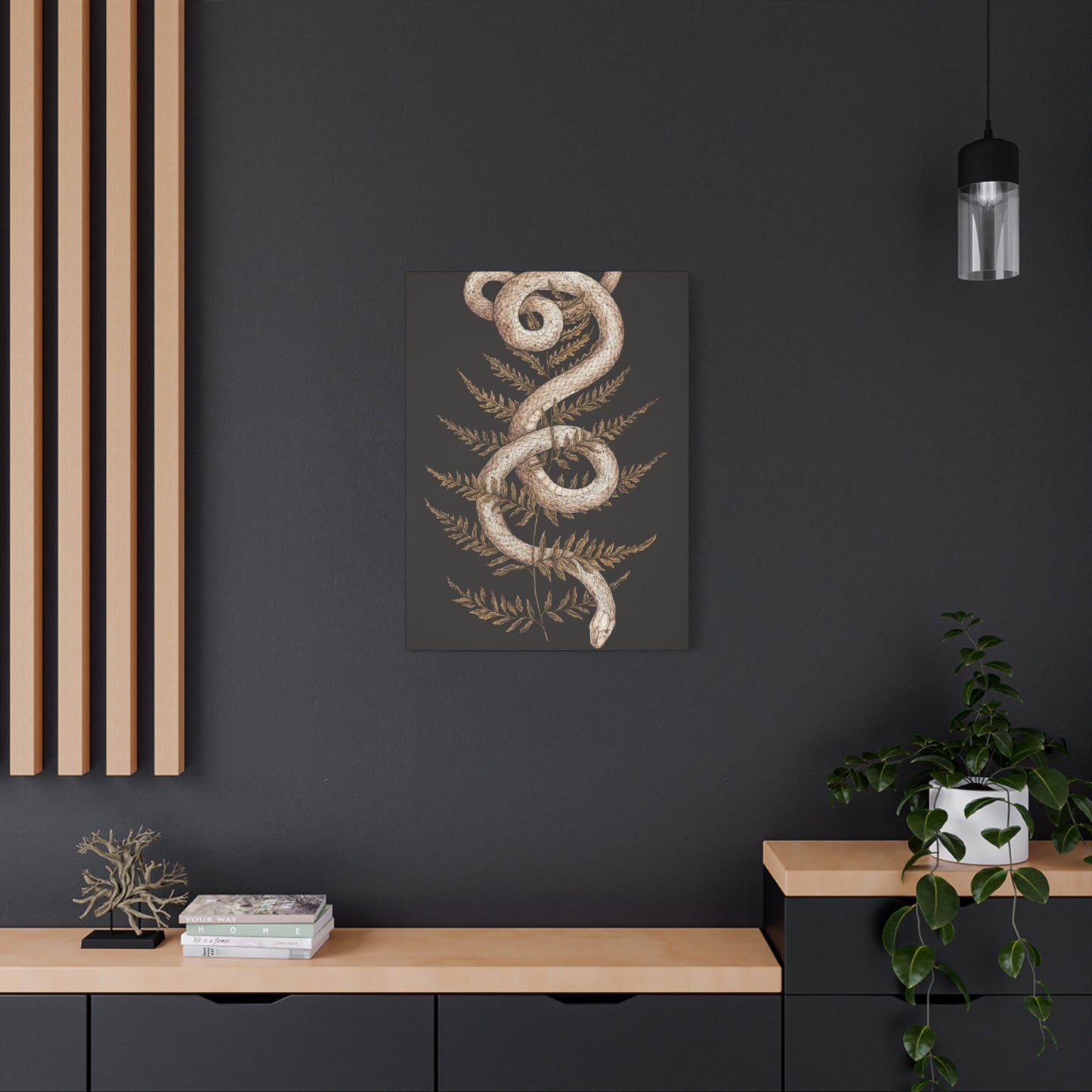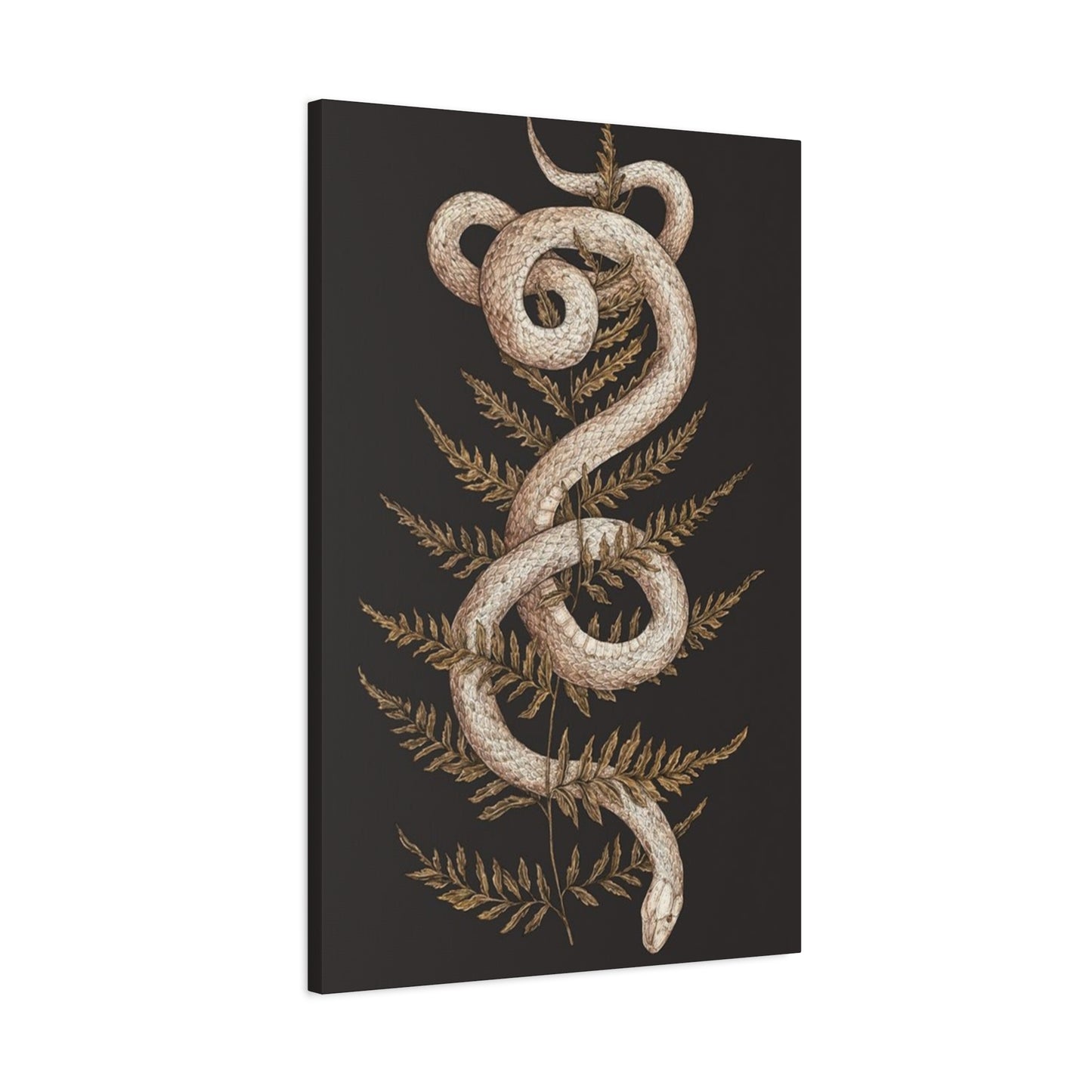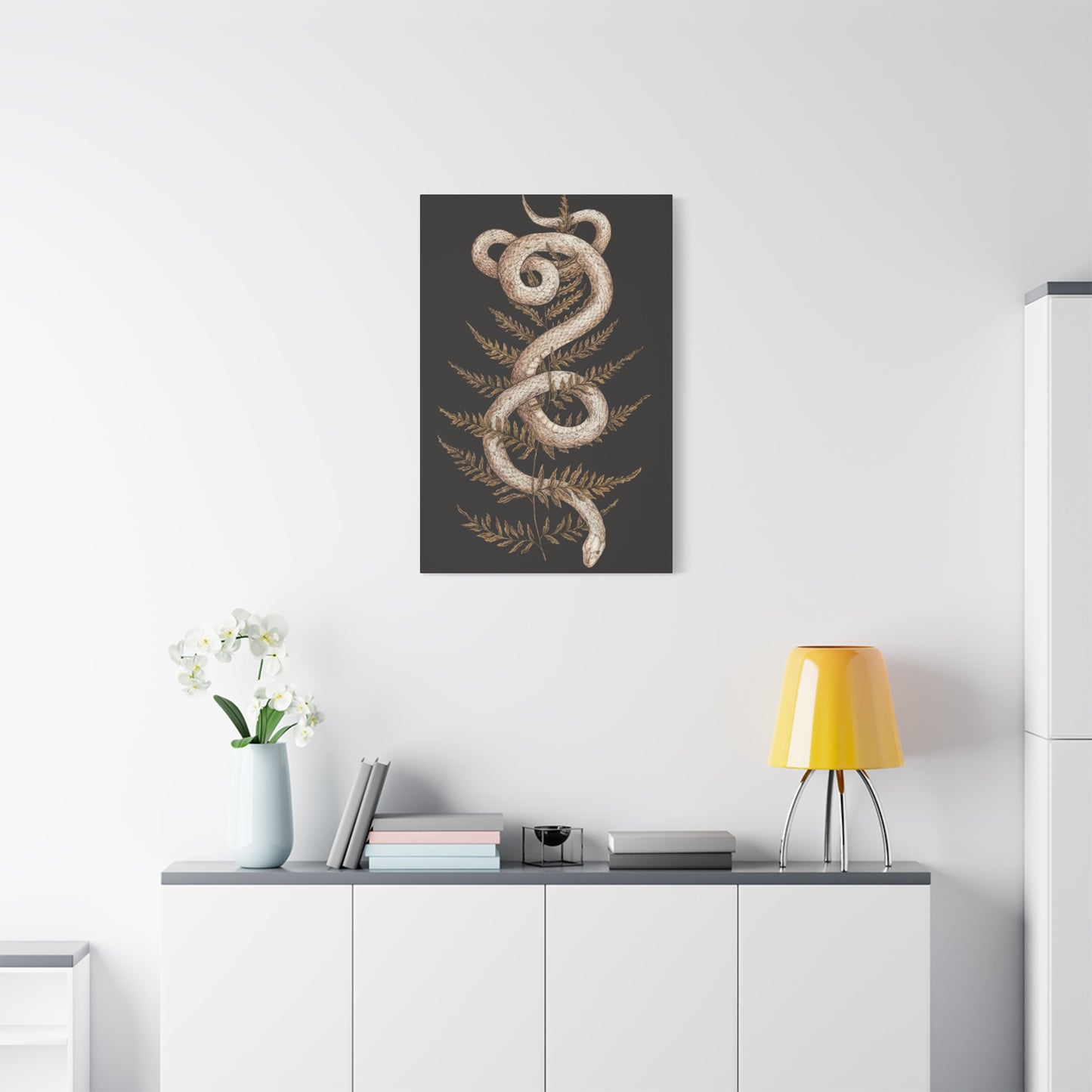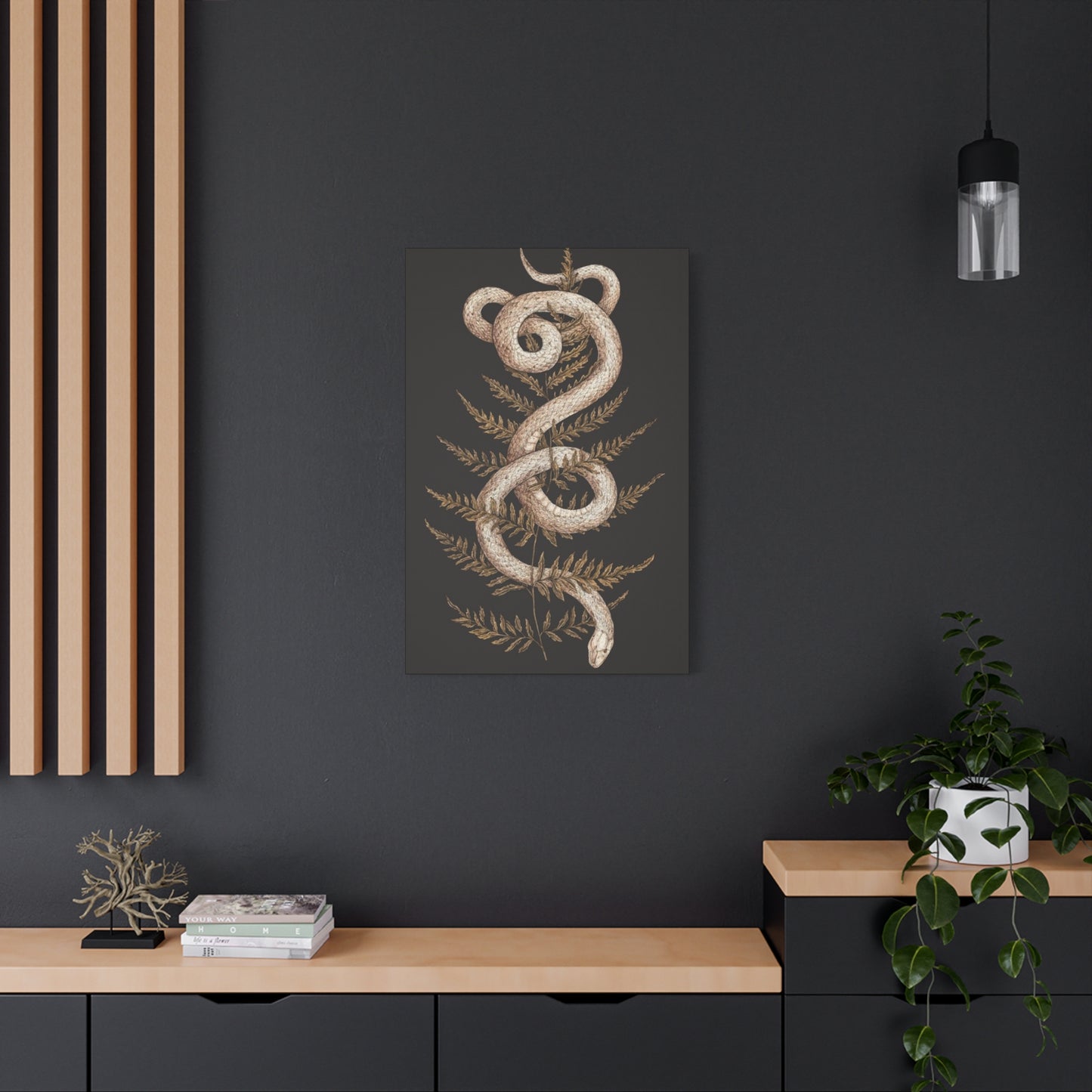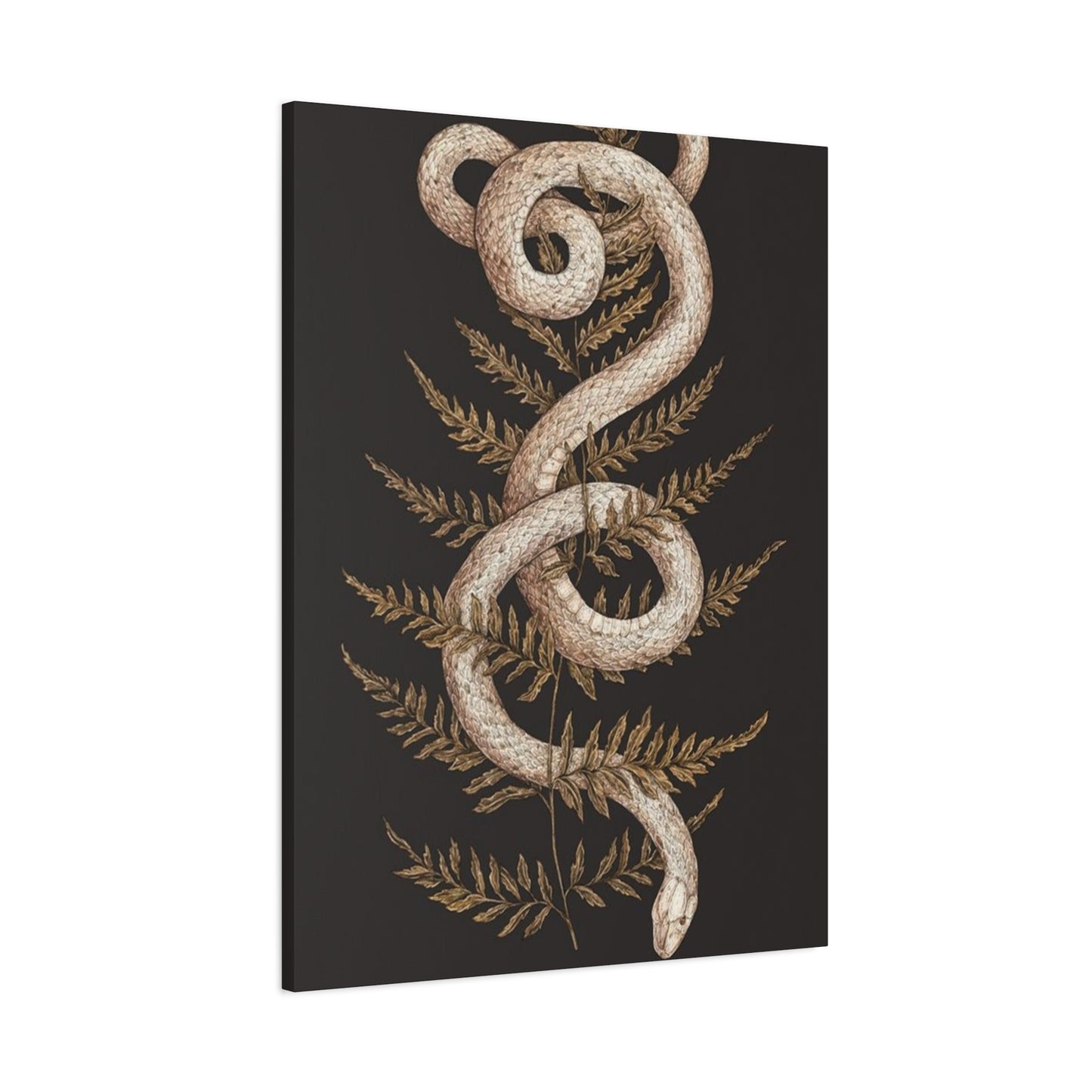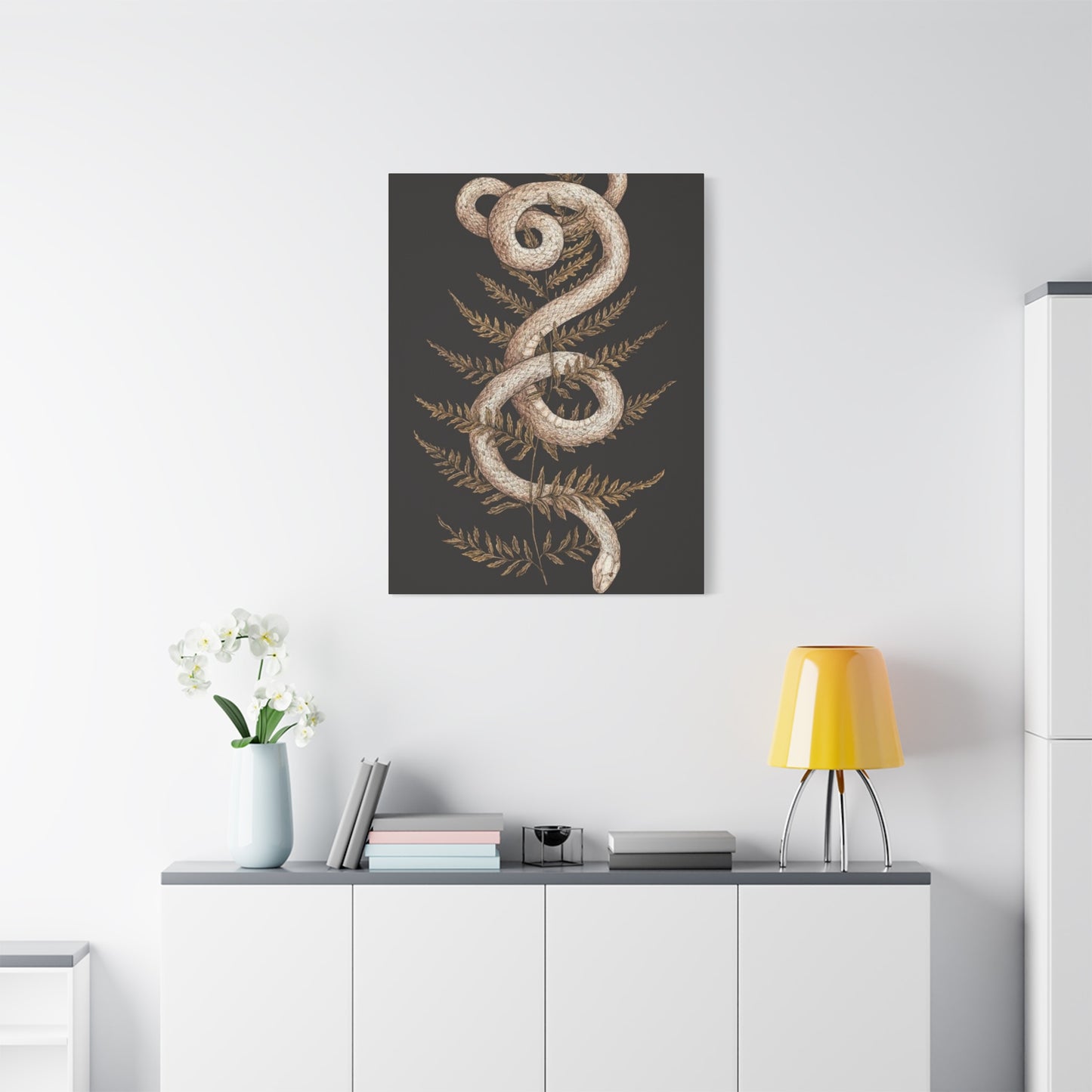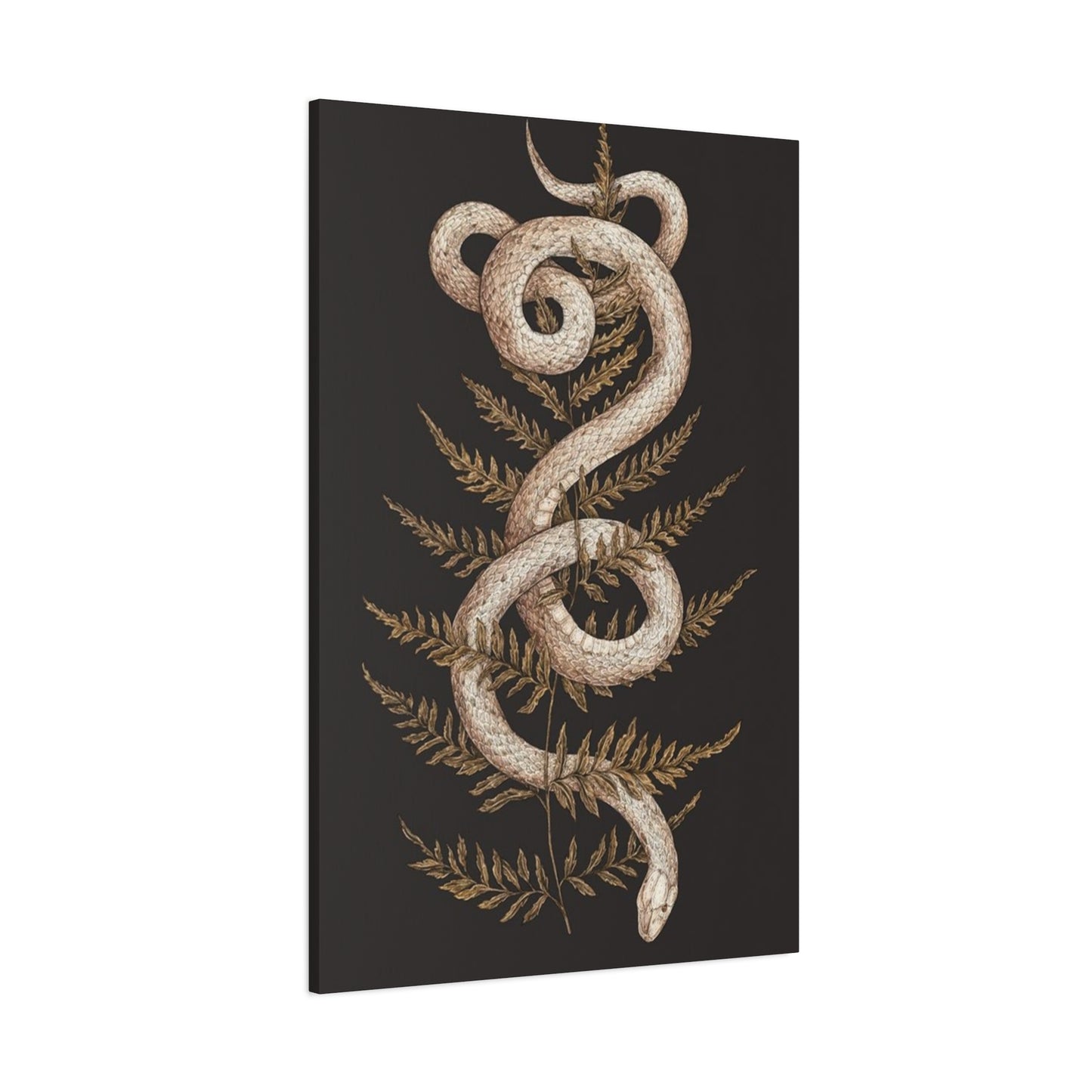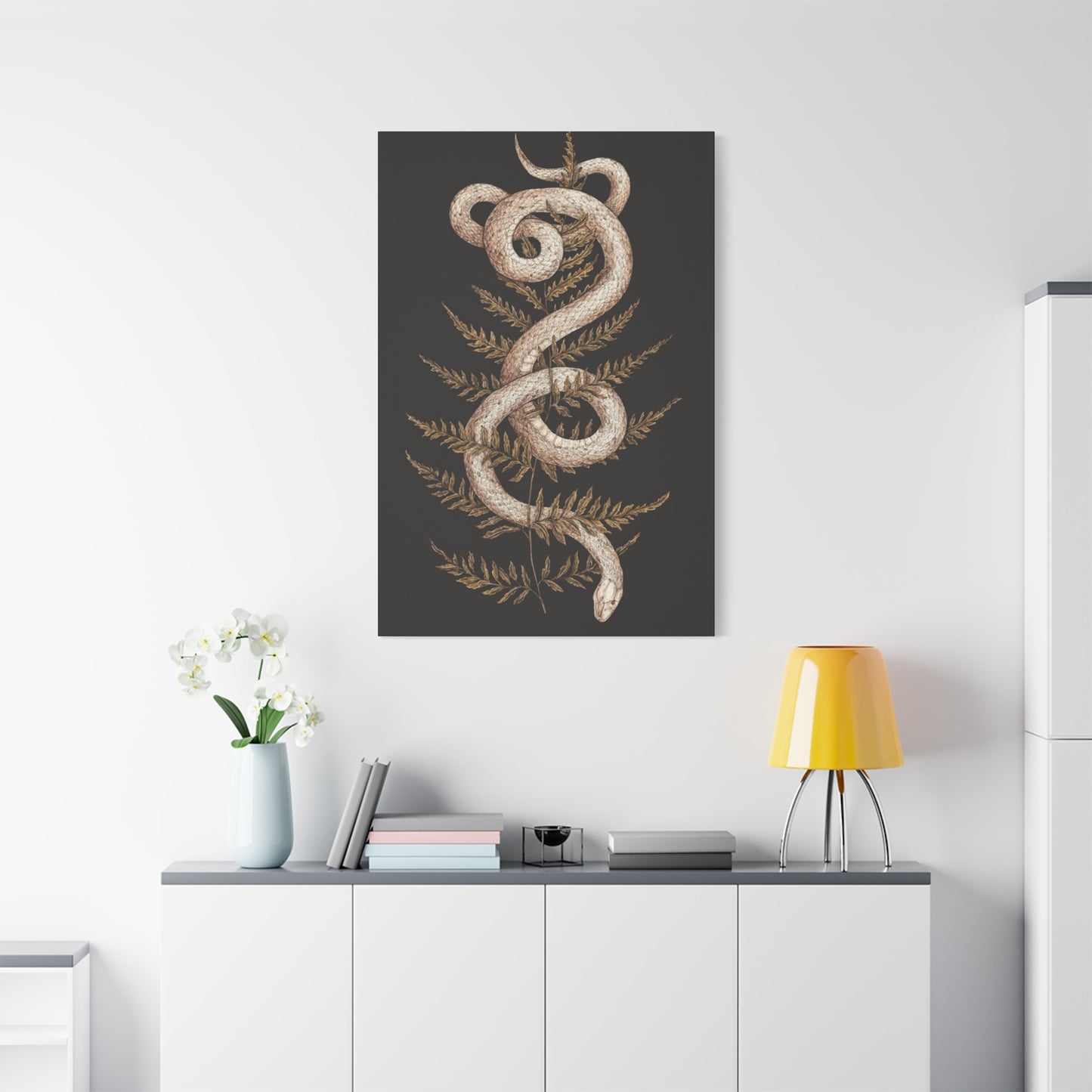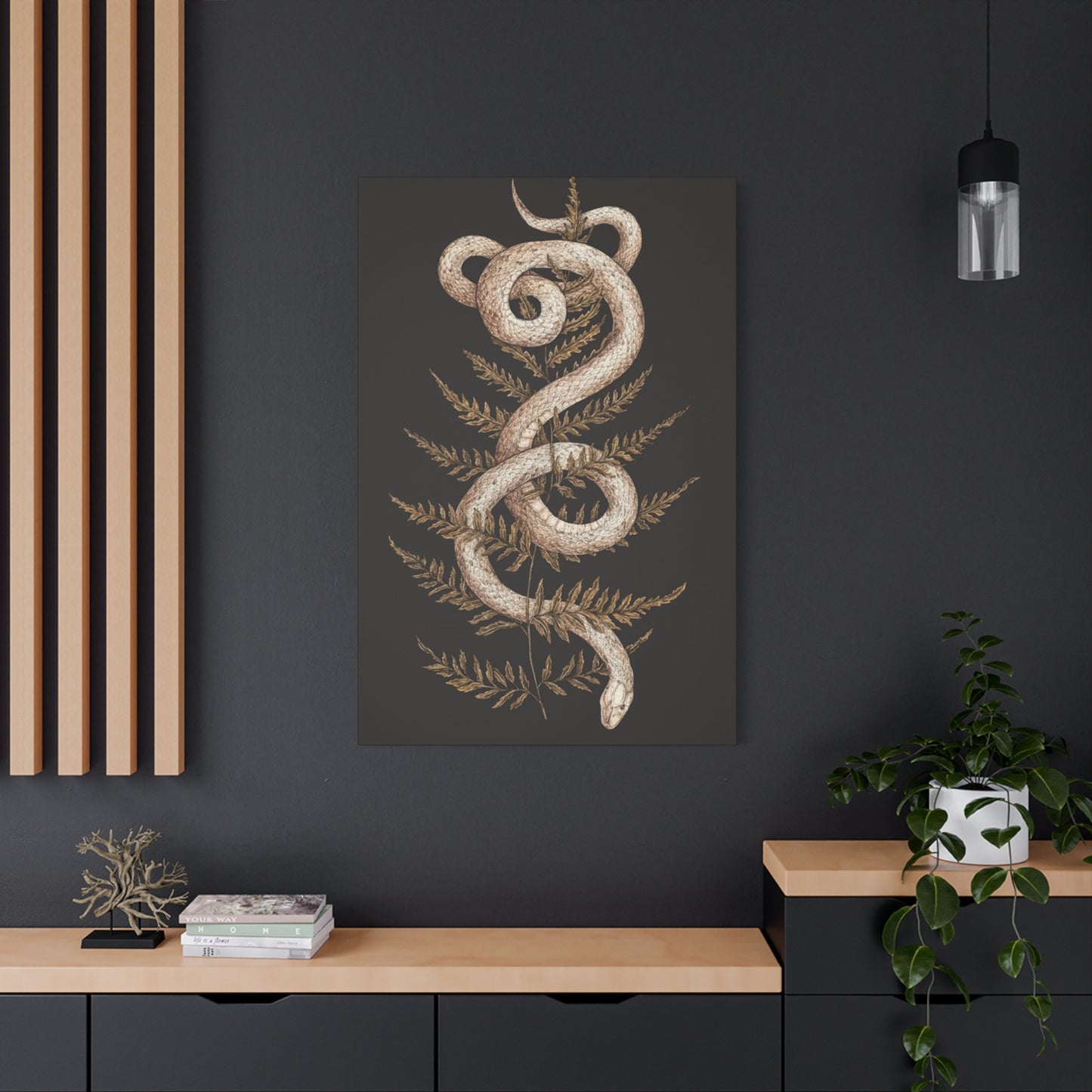White Snake Wall Art: Elevating Modern Interiors with Serpentine Elegance
White snake wall art has emerged as one of the most captivating design elements in contemporary interior decoration, offering a perfect blend of mysticism, elegance, and visual sophistication. This striking art form captures the ethereal beauty of serpents rendered in pristine white tones, creating pieces that resonate with both minimalist aesthetics and bold, dramatic spaces. The growing popularity of white snake artwork reflects a broader cultural appreciation for nature-inspired designs that carry deep symbolic meaning while maintaining visual refinement. Whether displayed as canvas prints, framed posters, or large-scale murals, white snake imagery brings an element of intrigue and sophistication to any environment.
The appeal of white snake wall art extends far beyond its aesthetic qualities. These pieces serve as powerful focal points that can anchor an entire room's design scheme, drawing the eye and creating memorable visual experiences. The serpentine form, with its graceful curves and flowing lines, introduces organic movement into interior spaces, softening angular architectural elements and adding a sense of fluidity to rigid room structures. When executed in white or light tones, snake artwork achieves a remarkable balance between boldness and subtlety, making it versatile enough to complement various design philosophies from Scandinavian minimalism to bohemian eclecticism.
Interior designers and homeowners alike have discovered that white snake art possesses a unique ability to transform spaces without overwhelming them. The monochromatic or predominantly white color palette allows these pieces to integrate seamlessly into existing color schemes while still maintaining a strong presence. This adaptability makes white snake wall art an intelligent investment for those seeking artwork that will remain relevant through changing design trends. The symbolic richness associated with serpent imagery adds layers of meaning to these decorative pieces, connecting modern interiors with ancient wisdom traditions and universal archetypes that have fascinated humanity for millennia.
The Deeper Meanings Woven Into Serpent Imagery
White snake wall art carries profound symbolic significance that enriches its presence in living spaces, transforming mere decoration into meaningful artistic expression. Throughout human history, serpents have represented transformation, renewal, and the cyclical nature of existence. The white coloration adds additional layers of meaning, often associated with purity, spiritual awakening, and transcendence. When you choose to display white snake artwork in your home, you're not simply selecting an attractive image but inviting these powerful symbolic associations into your daily environment.
In many Eastern traditions, white serpents are considered sacred beings associated with wisdom, protection, and good fortune. Chinese mythology features white snake spirits that possess magical abilities and deep connections to the natural world. These cultural narratives imbue white snake imagery with positive energy that can influence the atmosphere of a space. The serpent's ability to shed its skin has made it a universal symbol of transformation and personal growth, making white snake art particularly meaningful for spaces dedicated to self-reflection, meditation, or creative pursuits.
The feminine energy often associated with serpent symbolism connects white snake art to themes of intuition, mystery, and hidden knowledge. In psychological terms, the snake represents the unconscious mind and the wisdom that lies beneath the surface of everyday awareness. Displaying white snake artwork can serve as a daily reminder of these deeper aspects of existence, encouraging mindfulness and introspection. The coiled form of many snake depictions suggests potential energy waiting to be released, symbolizing personal power and the capacity for change.
White snake imagery also resonates with themes of duality and balance. The serpent moves between earth and water, light and shadow, creating a bridge between opposing forces. In a white rendition, this duality takes on additional meaning, with the light color representing consciousness, clarity, and spiritual illumination standing in contrast to the snake's traditionally darker associations. This tension creates visual and conceptual interest that keeps viewers engaged with the artwork over time, discovering new interpretations and meanings as their own perspectives evolve.
The healing associations of serpent imagery, dating back to ancient medical symbols, add another dimension to white snake wall art. The Rod of Asclepius, featuring a single serpent wrapped around a staff, has represented medicine and healing for thousands of years. White snake artwork can therefore carry connotations of wellness, recovery, and holistic health, making it particularly appropriate for spaces dedicated to physical or emotional healing. The calming effect of white tones combined with the symbolic healing power of serpent imagery creates artwork that nurtures both aesthetic sensibilities and emotional wellbeing.
Creating Harmony in Minimalist Environments
White snake art finds its most natural home in minimalist interiors, where its clean lines and restrained color palette perfectly complement the philosophy of less is more. Minimalist design emphasizes simplicity, functionality, and the careful curation of elements, making each piece in the space significant. White snake wall art meets these criteria beautifully, offering visual interest without clutter or excess. The flowing form of the serpent provides organic contrast to the geometric precision typical of minimalist spaces, introducing a naturalistic element that softens the overall aesthetic.
In minimalist rooms characterized by neutral walls, simple furniture, and uncluttered surfaces, white snake artwork serves as an ideal focal point. The key to successful integration is selecting pieces that maintain the monochromatic discipline of minimalist design while still providing enough visual detail to command attention. Artwork featuring white snakes against light gray or cream backgrounds works exceptionally well, creating subtle tonal variations that add depth without disrupting the peaceful atmosphere. The negative space surrounding the snake in these compositions echoes the breathing room so essential to minimalist philosophy.
The scale of white snake art in minimalist spaces deserves careful consideration. While minimalism often favors restraint, a single large-scale piece can make a more powerful statement than several smaller works. A substantial white snake canvas or print positioned as the room's primary artistic element embodies minimalist principles by reducing the number of decorative objects while maximizing impact. This approach also honors the serpent's natural scale and presence, allowing the artwork to be appreciated in its full glory rather than diminished by competing visual elements.
Framing choices for white snake art in minimalist settings should maintain the clean aesthetic these spaces require. Simple frames in natural wood, matte black, or brushed metal complement the artwork without drawing excessive attention to themselves. Alternatively, frameless canvas wraps or floating frame systems create contemporary presentations that align with minimalist sensibilities. The goal is to allow the white snake imagery to speak for itself, supported but not overshadowed by its presentation materials.
Lighting plays a crucial role in showcasing white snake art within minimalist interiors. Strategic illumination can transform these pieces from daytime focal points to evening showpieces that create ambiance. Track lighting, picture lights, or recessed spotlights directed at the artwork enhance its visibility and emphasize the subtle tonal variations in white snake imagery. Natural light should also be considered, as changing daylight conditions will alter how the artwork appears throughout the day, adding temporal dimension to the minimalist space.
The placement of white snake art in minimalist rooms requires thoughtful consideration of sightlines and spatial flow. In living areas, positioning the artwork at eye level on the primary focal wall ensures it receives proper attention without demanding it. Bedrooms benefit from white snake art placed where it can be viewed from the bed, creating a serene visual anchor for morning and evening reflection. In minimalist home offices, white snake imagery can provide inspiration and symbolic support for transformation and growth while maintaining the focused, distraction-free environment essential for productivity.
Achieving Serenity Through Pale Reptilian Forms
White snake art possesses an unexpected capacity to create serene, peaceful environments despite the cultural baggage serpents sometimes carry. The combination of flowing organic forms and light, neutral coloration produces imagery that soothes rather than agitates, making these pieces excellent choices for spaces dedicated to relaxation, meditation, or restorative activities. Understanding how to leverage white snake art's calming potential allows designers and homeowners to create sanctuaries that support mental health and emotional wellbeing through thoughtful aesthetic choices.
The serenity of white snake imagery derives partly from the visual qualities inherent in the serpent form itself. The smooth, continuous curves create visual flow that the eye follows without interruption, producing a meditative quality similar to watching water flow or clouds drift. This gentle movement contrasts sharply with the jagged, angular forms that tend to create visual tension and psychological activation. The rhythmic repetition of snake scales, when rendered with sufficient detail, adds another hypnotic element that encourages prolonged, relaxed viewing rather than quick glances.
Color psychology explains much of white snake art's serene impact. White and pale tones naturally create feelings of spaciousness, cleanliness, and calm, lowering psychological arousal and promoting relaxation. Unlike vibrant colors that stimulate and energize, white tones recede visually while maintaining presence, creating quiet backgrounds against which the mind can rest. When serpent forms are rendered in these peaceful tones, any threatening associations typically connected with snakes are neutralized, allowing the graceful aspects of serpentine beauty to dominate viewer responses.
Creating serene spaces with white snake art requires attention to supporting design elements that reinforce rather than contradict the peaceful atmosphere. Soft, comfortable furnishings invite physical relaxation that complements the visual serenity of the artwork. Natural materials and organic textures connect to the living subject matter while maintaining earthiness that grounds the space. Minimal clutter and clean surfaces prevent visual noise that would compete with the artwork's calming influence. Gentle, layered lighting creates ambiance that shifts throughout the day without harsh transitions, supporting the space's restorative purpose.
The symbolic associations of white snakes contribute to the serene atmospheres these artworks create. Beyond the physical form and color, the meanings layered onto serpent imagery influence how viewers respond to the art. Associations with healing, transformation, and spiritual wisdom create contemplative contexts that encourage introspection and peace. The snake's connection to earth and nature provides grounding symbolism that combats the disconnection and overstimulation of modern life. These symbolic dimensions work subtly but powerfully, affecting the space's emotional tone even for viewers who don't consciously recognize or analyze the imagery's deeper meanings.
Bringing Urban Edge to City Living Spaces
White snake art finds particularly strong resonance in urban interiors, where the artwork's combination of organic subject matter and contemporary presentation aligns perfectly with city dwelling aesthetics. Urban environments often feature industrial architectural elements, compact spaces, and design approaches that balance sophistication with edge, creating contexts where white snake imagery thrives. The contrast between natural serpent forms and manufactured urban surroundings generates creative tension that defines successful city interior design, making these pieces essential tools for urbanites seeking distinctive, memorable living spaces.
The industrial bones typical of urban apartments and lofts – exposed brick, concrete floors, metal fixtures, large windows – create striking backdrops for white snake art. The pristine, organic quality of serpentine imagery provides visual relief from hard surfaces and manufactured materials without softening the space's urban character. Instead of conflict, this juxtaposition creates sophisticated dialogue between natural and industrial elements, neither dominating but each enhancing the other's distinctive qualities. The result is spaces that feel connected to both civilization and nature, urban yet not alienating, contemporary yet timeless.
Space constraints in urban dwellings make white snake art particularly valuable as a decorative strategy. Rather than cluttering limited square footage with multiple decorative objects, a single striking piece of snake artwork creates significant impact while preserving the openness essential in smaller spaces. The vertical emphasis of many snake compositions works especially well in urban interiors where ceiling height often exceeds floor space, drawing the eye upward and creating the illusion of greater spaciousness. This efficiency aligns with urban living principles that prioritize quality over quantity and impact over abundance.
The cultural sophistication expected in urban environments favors white snake art's combination of aesthetic appeal and symbolic depth. City dwellers often pride themselves on cultural awareness and aesthetic discernment, seeking furnishings and artwork that demonstrate both. White snake imagery satisfies these requirements by offering visual interest for casual viewers while rewarding deeper engagement from those who appreciate the symbolism and artistic execution. This layered appeal makes serpent artwork excellent conversation starters, facilitating the social connections so important in urban contexts where community must be actively constructed.
Urban color palettes dominated by grays, blacks, whites, and industrial metals provide perfect contexts for white snake art integration. The neutral foundation allows the artwork to register clearly without chromatic competition while maintaining the cohesive, designed appearance that sophisticated urban spaces require. Accent colors common in city interiors – deep blues, emerald greens, burnt oranges – complement white snake imagery without overwhelming it, creating balanced environments that feel curated rather than haphazard. This color harmony demonstrates the design thinking that separates thoughtfully appointed urban homes from generic, uninspired spaces.
The Enchantment of Serpentine Imagery
White snake wall art carries an undeniable magical quality that transcends purely aesthetic or decorative function, tapping into ancient associations between serpents and mystical power. This magical dimension appeals to contemporary sensibilities seeking enchantment and meaning in increasingly rationalized, technological worlds. The artwork serves as portal to imaginative realms where symbolism, mythology, and personal interpretation create experiences richer than mere visual consumption. Understanding this magical quality helps explain why white snake imagery resonates so deeply with diverse audiences seeking more than surface beauty in their environments.
The magical associations of serpents span cultures and millennia, creating deep wells of meaning that contemporary viewers access consciously or unconsciously. Ancient wisdom traditions worldwide recognized snakes as liminal creatures moving between realms – earth and underworld, material and spiritual, known and mysterious. White serpents particularly carried associations with purity, divine favor, and supernatural ability. Modern white snake art inherits these mythological resonances, allowing contemporary spaces to connect with timeless narratives that enrich everyday experience with layers of meaning beyond immediate visibility.
The transformative lifecycle of snakes, particularly their skin shedding, provides powerful metaphor that operates magically in viewers' imaginations. This natural process becomes symbolic of personal transformation, spiritual rebirth, and the possibility of radical change – themes central to magical thinking across traditions. White snake art displayed in living spaces serves as constant reminder of these transformative possibilities, encouraging viewers to imagine their own potential for growth and renewal. The magic lies not in supernatural intervention but in the artwork's capacity to inspire hope, courage, and belief in personal evolution.
The sinuous movement characteristic of serpents suggests otherworldly grace that seems to defy physical limitations. Even in static artwork, this quality comes through, creating impressions of frozen motion ready to resume. This suspended animation carries magical qualities, as if the white snake might at any moment complete its movement, transforming from representation to living presence. This liminality between art and life, stillness and motion, creates enchantment that keeps viewers engaged and slightly off-balance, never quite certain of the boundary between image and reality.
Creating magical atmospheres with white snake art requires supporting elements that reinforce rather than contradict the enchanted quality. Soft, ambient lighting creates mystery and suggestion rather than harsh revelation, allowing shadows and highlights to play across the serpent form in ways that enhance its otherworldly quality. Natural elements like plants, stones, or water features connect to the living world serpents inhabit while adding organic magic to manufactured spaces. Textiles with interesting textures or subtle patterns add tactile richness that engages multiple senses, deepening the experiential quality of the space beyond pure visuality.
The white coloration of serpent imagery amplifies magical associations by connecting to lunar symbolism, ghost stories, and visions of transcendence. White snakes appear as unusual variants in nature, their rarity lending them special status that translates into artwork. This rareness suggests privilege – the viewer has encountered something uncommon and therefore special, creating feelings of fortune and blessing. The luminous quality of white against darker backgrounds creates almost supernatural effects, particularly in low lighting where the snake seems to generate its own illumination, enhancing magical atmosphere.
Personal ritual can enhance the magical quality of white snake art, transforming passive viewing into active engagement with the imagery's symbolic power. Creating small altars or arrangement around the artwork with personally meaningful objects – crystals, candles, meaningful photographs, written intentions – establishes the snake image as focal point for contemplation and spiritual practice. These rituals need not involve formal religious frameworks; personal meaning and consistent practice create their own magic, transforming ordinary spaces into sites of personal power and spiritual connection.
The magical dimension of white snake art operates most powerfully when viewers remain open to irrational, intuitive responses rather than purely analytical engagement. Allowing the artwork to affect mood, inspire daydreams, or trigger associations without immediately analyzing these responses preserves the enchanted quality that makes the imagery valuable beyond aesthetic contribution. This receptive stance toward art reconnects viewers with imaginative capacities often suppressed in adult, rationalized life, creating spaces where magic remains possible and beauty carries meaning beyond market value or design trend adherence.
Creating Visual Anchors in Room Design
White snake art functions exceptionally well as a focal point in interior design, providing visual anchors that organize spaces and guide viewer attention. The focal point concept represents a foundational principle in successful room design, establishing hierarchies that prevent visual chaos and create coherent, comfortable environments. White snake imagery possesses several qualities that make it ideal for this role: strong compositional presence, distinctive subject matter, symbolic richness, and adaptability to various presentation scales. Understanding how to leverage these qualities ensures white snake art fulfills its potential as organizational centerpiece rather than becoming one more competing element in cluttered spaces.
The visual weight of white snake art derives from both its formal qualities and its psychological impact. Compositionally, the serpentine form creates strong lines that draw and hold attention, while the contrast between white snake and background generates definition that prevents the image from receding visually. Psychologically, the slightly transgressive nature of serpent subject matter combined with our evolutionary programming to notice snakes ensures these images capture attention more reliably than neutral subjects. This combined visual and psychological weight makes white snake art naturally suited to focal point status, requiring minimal supporting strategies to establish dominance within a space.
Positioning white snake focal point art requires consideration of natural viewing patterns and room circulation. In living rooms, the primary seating arrangement typically orients toward a focal wall – often the one opposite the entry or featuring the television or fireplace. Placing white snake art on this wall ensures maximum visibility and impact, with the artwork anchoring the social space and providing visual interest during gathering. In bedrooms, positioning snake imagery on the wall facing the bed creates a natural focal point visible from the primary furniture piece, though care should be taken to ensure the image promotes calm rather than creating nighttime unease.
The Rising Popularity of Serpentine Decor
White snake art has experienced remarkable growth in popularity within interior design circles, reflecting broader cultural shifts toward nature-inspired decor, symbolic imagery, and distinctive personal expression. This trending status makes white snake artwork both fashionable and meaningful, offering aesthetic currency while avoiding the emptiness of purely trend-driven choices. Understanding the factors driving this popularity helps contextualize white snake art's current moment while recognizing its potential for enduring relevance beyond temporary fashion.
Social media platforms have significantly amplified white snake art's visibility and desirability. Instagram, Pinterest, and similar visual platforms showcase striking interiors where serpent imagery creates memorable moments that photograph beautifully. The high contrast and strong compositions typical of white snake art translate effectively to digital formats, performing well in feeds where arresting visuals capture attention amid endless scrolling. Influencers, designers, and everyday users sharing spaces featuring white snake artwork create aspirational content that inspires others to adopt similar aesthetic choices, accelerating trend adoption across geographic and demographic boundaries.
The biophilic design movement, emphasizing human connection to nature within built environments, has created favorable conditions for white snake art's rise. As urban living becomes increasingly prevalent and screen time dominates daily life, people seek compensation through natural elements in their domestic spaces. While plants represent the most obvious biophilic strategy, animal imagery including serpents provides alternative or complementary approaches. White snake art satisfies biophilic desires while offering sophistication and visual interest that simple nature scenes might lack, making it particularly appealing to design-conscious audiences seeking natural connection without sacrificing style.
The contemporary fascination with mysticism, spirituality, and alternative wisdom traditions has elevated serpent symbolism's cultural profile. Practices like meditation, yoga, crystal healing, and astrology have moved from fringe to mainstream, normalizing spiritual content in everyday life. White snakes' rich symbolic associations align with these interests, making the artwork appealing to individuals exploring personal spirituality outside traditional religious frameworks. The imagery functions simultaneously as aesthetic choice and spiritual statement, allowing subtle expression of values and interests without explicit religious identification.
The reaction against mass-produced, generic decor has created appetite for distinctive, characterful design elements that communicate personal identity. White snake art, particularly from smaller producers, independent artists, or limited editions, offers uniqueness that IKEA prints and department store artwork cannot match. The slightly unconventional subject matter signals creative confidence and willingness to deviate from safe, predictable choices, qualities highly valued in contemporary culture's emphasis on authentic self-expression. This distinctiveness makes white snake art popular among audiences seeking to differentiate their spaces from neighbors' and friends' homes.
Celebrity and designer endorsements, though sometimes subtle, have contributed to white snake art's trending status. When notable figures incorporate serpent imagery into their showcased spaces, whether in magazines, television programs, or social media posts, they legitimize the choice and inspire emulation. Interior designers featuring white snake art in published projects demonstrate professional approval that reassures hesitant adopters, making the trend more accessible to mainstream audiences who might otherwise consider serpent imagery too bold or unconventional for personal spaces.
Enhancing Rooms with Ophidian Imagery
White snake art possesses remarkable capacity to elevate interior spaces, transforming ordinary rooms into distinctive environments that reflect sophistication, creativity, and cultural awareness. This elevating effect operates on multiple levels simultaneously – aesthetic, symbolic, and experiential – creating value that far exceeds the artwork's material cost. Understanding the mechanisms through which white snake art achieves elevation helps homeowners and designers leverage these pieces strategically, maximizing their transformative potential within diverse spaces and budgets.
The aesthetic elevation begins with white snake art's visual sophistication. Quality serpent imagery demonstrates artistic skill through accurate rendering, thoughtful composition, and effective use of tonal variation. These technical accomplishments signal that the space's inhabitant values craftsmanship and quality, immediately distinguishing the environment from those decorated carelessly or cheaply. The neutral color palette demonstrates color sophistication, proving that chromatic restraint can deliver more impact than bright, busy alternatives. This aesthetic maturity elevates spaces by indicating design literacy and developed taste.
Symbolic elevation occurs through white snake art's rich associations with transformation, wisdom, and spiritual power. Spaces featuring this imagery carry these symbolic resonances, subtly communicating that the environment serves purposes beyond mere shelter or display. This depth distinguishes elevated spaces from purely decorative ones, suggesting that inhabitants engage with ideas, meanings, and narratives rather than simply consuming visual trends. The symbolic dimension creates conversation opportunities and intellectual engagement that prevent spaces from feeling superficial or empty despite aesthetic appeal.
The experiential elevation white snake art provides involves transforming passive viewing into active engagement. Rather than receding into background after initial installation, quality serpent artwork continues rewarding attention over time. New details emerge with sustained viewing, interpretations shift based on mood and circumstance, and the artwork participates in the space's evolution rather than remaining static. This ongoing engagement elevates everyday environments into settings that stimulate continued interest and appreciation, combating the habituation that makes familiar spaces invisible over time.
White snake art elevates spaces by serving as proof of personal courage and design confidence. Choosing serpent imagery over safer, more conventional subjects demonstrates willingness to follow personal aesthetic instincts rather than defaulting to widely accepted options. This confidence elevates the space by imbuing it with personality and character that cookie-cutter design approaches cannot achieve. Visitors and inhabitants alike respond to this authenticity, recognizing and appreciating the deliberate choices that define the environment.
The cultural literacy demonstrated by white snake art selections contributes to perceived elevation. Serpent symbolism's cross-cultural presence means that different viewers may recognize references to Greek mythology, Asian wisdom traditions, indigenous American cosmologies, or contemporary spiritual practices. This multivalent quality creates inclusive elevation that doesn't depend on specific cultural knowledge but rewards those who bring relevant contexts to viewing. The artwork thus elevates spaces by connecting them to broader cultural conversations and timeless themes that transcend individual experience.
Natural Integration with Free-Spirited Aesthetics
White snake art finds particularly harmonious home within bohemian-chic interiors, where the artwork's combination of natural subject matter, mystical associations, and visual distinctiveness aligns perfectly with boho design principles. Bohemian style celebrates eclecticism, personal expression, global influences, and connection to nature and spirituality – all qualities that white snake imagery embodies or complements. Understanding how to integrate serpent art within boho contexts helps create cohesive, layered environments that feel collected over time rather than purchased all at once.
The layered, maximalist tendencies of bohemian design provide ideal contexts for white snake art to shine without overwhelming. Unlike minimalist approaches where single pieces must carry entire aesthetic burden, boho environments distribute visual interest across multiple elements – textiles, plants, collections, and varied artwork. White snake pieces contribute to this visual richness while their relatively restrained color palette prevents them from competing destructively with surrounding elements. The serpentine form's organic curves echo the natural materials and flowing textiles typical of bohemian spaces, creating formal harmony despite diverse sources and styles.
The global, culturally eclectic nature of bohemian design makes white snake art particularly appropriate given serpent symbolism's cross-cultural presence. Boho interiors often mix influences from multiple traditions – Moroccan textiles, Asian furniture, South American ceramics, African baskets – creating worldly environments that suggest travel, cultural curiosity, and open-mindedness. White snake imagery fits seamlessly into these multicultural collections, its symbolic richness connecting to various traditions without being tied exclusively to any single culture. This universality allows the artwork to bridge diverse elements while maintaining the authentic, personally curated quality essential to successful bohemian design.
The emphasis on natural materials and organic forms in bohemian spaces creates perfect conditions for white snake art integration. Rattan furniture, macramé wall hangings, potted plants, wooden objects, and stone elements provide textural richness that complements the natural subject matter of serpent imagery. The white coloration of the snake art prevents it from adding excessive visual weight despite the surrounding abundance, maintaining the airy, relaxed quality that distinguishes bohemian from cluttered aesthetics. This balance between richness and lightness represents sophisticated boho design that white snake art supports effectively.
The mystical, spiritual dimensions of bohemian culture align closely with white snake symbolism, creating thematic coherence that strengthens overall design impact. Boho spaces often incorporate crystals, dreamcatchers, spiritual books, meditation cushions, and altar areas that reflect inhabitants' spiritual practices and interests. White snake art contributes to this mystical atmosphere while offering aesthetic sophistication that prevents the space from reading as naive or unsophisticated. The artwork demonstrates that spiritual interest can coexist with design literacy, elevating both dimensions rather than compromising either.
Color strategies in bohemian rooms featuring white snake art should embrace the rich, saturated hues typical of the style while ensuring the artwork maintains visibility. Jewel tones, earth colors, and ethnic textile patterns can surround white snake pieces without overwhelming them, provided that the immediate area near the artwork offers some visual respite. This might involve positioning the snake art above neutral-colored furniture, against a relatively calm wall section, or surrounded by negative space that allows it to breathe despite overall room richness. The goal is creating visual rhythm that alternates between areas of intensity and calm, with white snake art serving as anchor point that rewards focused attention.
The casual, lived-in quality of bohemian spaces suits various presentation styles for white snake art. While formal framing works well, more relaxed approaches like tapestries, unframed canvases, or posters mounted with decorative clips maintain the approachable, unpretentious atmosphere boho design cultivates. Leaning artwork against walls rather than hanging it reinforces the collected-over-time appearance that distinguishes authentic bohemian style from contrived imitations. These casual presentations also allow easy rearrangement as the space evolves, honoring the organic development process central to bohemian design philosophy.
The plant-rich environments typical of bohemian spaces provide particularly effective contexts for white snake artwork. Positioning serpent imagery among abundant greenery creates natural habitat suggestions that enhance the artwork's organic qualities while the white coloration ensures visibility against foliage. This combination celebrates nature in both representational and literal forms, creating biophilic environments that support wellbeing while demonstrating sophisticated design thinking. The relationship between living plants and depicted animals creates dynamic compositions that change as plants grow and seasons shift, adding temporal dimension to static artwork.
The Impact of Restraint and Intensity Combined
White snake wall art achieves remarkable impact through its paradoxical combination of visual simplicity and symbolic power. This duality – restraint meeting intensity – creates artwork that functions effectively across diverse contexts while maintaining distinctive character. The minimalist color palette and clean compositions provide simplicity that prevents visual overwhelm and ensures adaptability. Simultaneously, the powerful serpentine form and rich symbolic associations deliver intensity that prevents the artwork from becoming bland or forgettable. Understanding this balance helps explain white snake art's broad appeal and enduring effectiveness.
The simplicity component derives primarily from color restraint and formal clarity. White and neutral tones create calm visual fields that don't compete with surrounding elements or demand constant attention through chromatic intensity. This restraint demonstrates confidence – the artwork doesn't need bright colors or busy patterns to justify its presence. The serpent form itself, while potentially complex in its curves and details, reads as single, unified subject rather than collection of competing elements. This formal simplicity allows quick comprehension while inviting sustained examination of subtleties that emerge over time.
The power component stems from the serpent's archetypal resonance and formal strength. Snakes occupy unique positions in human consciousness, simultaneously fascinating and fearsome, beautiful and dangerous. This psychological weight gives even simplified serpent imagery substantial impact that more neutral subjects lack. The sinuous form creates strong compositional lines that organize visual fields and direct viewer attention. The combination of graceful curves and implied strength – snakes are powerful despite lacking limbs – creates compelling visual narratives that hold interest beyond initial viewing.
Achieving balance between simplicity and power requires careful artistic execution. Oversimplification can render serpent imagery generic or childish, losing the sophistication that makes white snake art valuable for mature, designed spaces. Excessive complexity or detail can overwhelm the restrained color palette and create visual confusion that diminishes impact. The sweet spot involves sufficient detail to convey the snake's character and create visual interest while maintaining clean overall composition that reads clearly from distance and doesn't fragment into busy chaos upon close examination.
The restraint in white snake art allows the power to resonate more effectively than it might in more elaborate presentations. By removing chromatic distraction and compositional clutter, the artwork focuses all attention on the essential elements – form, symbolism, and emotional resonance. This focus intensifies these core qualities, making them more rather than less impactful despite the apparent simplicity. The principle mirrors other minimalist approaches where less delivers more through concentration rather than dilution of meaningful elements.
Interior applications of this simplicity-power balance allow white snake art to function in spaces with very different requirements. Minimalist environments benefit from the restrained presentation that honors their aesthetic discipline while the symbolic power prevents sterility or emotional coldness. Maximalist spaces appreciate the visual calm white snake art provides while the power ensures the piece maintains presence amid competition from abundant surrounding elements. This adaptability makes white snake art rare in its ability to serve diverse design approaches without compromise.
Achieving Dramatic Impact Through Color and Form
White snake art demonstrates remarkable boldness despite – or perhaps because of – its restrained color palette, proving that dramatic impact need not depend on chromatic intensity. The combination of striking serpentine forms and high-contrast presentations creates artwork that commands attention and makes memorable impressions while maintaining the sophistication that broader color ranges often undermine. This bold-yet-beautiful quality makes white snake art particularly valuable for those seeking statement pieces that won't become tiresome or dated as tastes evolve.
The boldness of white snake art stems primarily from subject matter choices that carry inherent intensity. Serpents are not neutral or universally comfortable subjects; choosing to display them prominently requires confidence and willingness to evoke reactions beyond bland approval. This slight transgression of conventional decorative choices creates boldness that safer subjects cannot match. The choice signals that the space's designer values authenticity and personal expression over broad appeal or resale concerns, demonstrating the courage that defines truly bold design.
The formal qualities of serpent imagery contribute significantly to bold impact. The strong curves and distinctive silhouettes of snake forms create immediate visual recognition and clear compositional structure. Unlike softer, more ambiguous subjects that might blend into backgrounds or require careful viewing to appreciate, serpent forms announce themselves clearly and hold attention firmly. This formal strength allows white snake art to function as anchor points that organize entire rooms, a role requiring boldness that timid artwork cannot fulfill.
The beauty component prevents boldness from becoming harsh or off-putting. The graceful curves of serpentine forms embody organic elegance that appeals to aesthetic sensibilities even for viewers initially uncertain about snake subject matter. The careful rendering of scales, the play of light and shadow across three-dimensional forms, and the compositional balance of quality pieces demonstrate artistic skill that generates appreciation independent of subject preferences. This beauty softens the boldness, making the artwork accessible to broader audiences while maintaining distinctive character.
Creating spaces that balance white snake art's boldness with overall livability requires supporting design choices that acknowledge but don't amplify the artwork's intensity. Surrounding furnishings and decor should provide visual relief, offering calm areas where eyes can rest after engaging with bold focal points. Colors, patterns, and textures should be chosen to complement rather than compete with the snake artwork, creating cohesive environments where boldness reads as confident choice rather than chaotic excess. This supporting restraint allows the bold element to shine without overwhelming the space's functionality or comfort.
The beautiful aspect of white snake art provides entry point for viewers who might initially resist bold serpent imagery. By leading with aesthetic appeal – the elegant curves, the sophisticated coloration, the artistic execution – the artwork wins acceptance before symbolic or psychological content fully registers. This sequencing allows bold choices to integrate into spaces and lives that might otherwise reject them, expanding the artwork's potential audience while maintaining its distinctive character. The beauty serves as ambassador for the boldness, making introductions that lead to deeper appreciation over time.
The combination of bold and beautiful in white snake art creates pieces that make statements without shouting, that express personality without alienating. This balance represents mature design thinking that recognizes the difference between attention-seeking and attention-worthy. The artwork earns its focal status through inherent qualities rather than demanding it through shocking or extreme presentations. This distinction matters particularly in residential contexts where occupants live with design choices daily rather than encountering them briefly in public or commercial spaces.
Adding Dimension Through Serpentine Compositions
White snake art excels at adding visual and conceptual depth to walls and rooms, transforming flat surfaces into dynamic spaces that engage viewers on multiple levels. This depth-creating capacity makes serpent imagery particularly valuable in contemporary interiors where flat-screen televisions, minimalist furniture, and smooth architectural finishes can create environments lacking textural and dimensional interest. Understanding how white snake art generates depth helps designers and homeowners leverage these pieces strategically to create richer, more engaging spaces.
The literal depth creation begins with the three-dimensional rendering of serpentine forms. Quality white snake artwork depicts curves that advance and recede in space, with careful shading and highlighting that creates the illusion of volume on flat surfaces. This sculptural quality gives walls architectural dimension they would otherwise lack, especially in modern construction where decorative moldings and other traditional depth-creating elements are often absent. The serpent's coiled or twisted postures maximize this dimensional effect, creating complex spatial relationships within single images that reward examination from multiple viewing angles.
The tonal depth within white snake artwork adds another dimension even when compositions are relatively flat. The range from pure white highlights through various gray mid-tones to deep shadow areas creates tonal complexity that prevents the artwork from reading as simple silhouette. This grayscale depth provides visual information that the eye processes similarly to color variation, creating richness despite chromatic restraint. The subtle gradations between tones become more apparent with sustained viewing, revealing depth that initial glances might miss and ensuring the artwork continues offering new appreciations over time.
Conceptual depth derives from the symbolic associations and narrative possibilities white snake imagery carries. Unlike purely decorative patterns or abstract compositions that exist primarily as visual phenomena, serpent artwork invites interpretation, storytelling, and personal projection. Viewers bring their own knowledge of snake symbolism, personal experiences with serpents, and emotional responses to reptiles, creating layers of meaning beyond the artist's intentions. This participatory dimension adds psychological depth that transforms passive decoration into active engagement, enriching the viewing experience and the viewer's relationship with the space.
The spatial depth white snake art creates extends beyond the immediate wall surface to influence entire room volumes. A commanding serpent image draws the eye specifically to one wall, establishing focal depth that organizes the three-dimensional space. This directed attention creates perceptual layering – foreground furniture, middle-ground circulation space, background focal wall – that makes rooms feel more complex and interesting than undifferentiated volumes. The artwork anchors this spatial organization, providing the visual destination that justifies the layered progression through the space.
White snake art adds temporal depth through its capacity to appear different under varying lighting conditions and viewing contexts. Natural daylight reveals certain details and creates specific shadows that artificial lighting alters or eliminates. Morning viewing when fresh and alert produces different responses than evening viewing when tired and reflective. Seasonal changes in mood and perspective shift how the imagery resonates emotionally. This temporal variation adds dimension across time, making the artwork a dynamic rather than static element that participates in the space's ongoing life.
The cultural depth of serpent symbolism connects contemporary spaces to historical and cross-cultural narratives that provide context beyond individual experience. A white snake on a wall links to ancient myths, religious traditions, and symbolic systems developed over millennia across civilizations. This connection to larger human story adds profound depth that transcends the immediate present, suggesting that the space and its inhabitants participate in timeless patterns rather than existing in cultural vacuum. This grounding provides psychological and spiritual depth that mere decoration cannot approach.
Conclusion
White snake wall art has established itself as a powerful and versatile design element that transcends simple decoration to become a meaningful component of contemporary interior spaces. Throughout this exploration, we have examined the multifaceted appeal of serpentine imagery rendered in pristine white tones, discovering how these pieces function across aesthetic, symbolic, and practical dimensions. The popularity of white snake art reflects deeper cultural currents including renewed appreciation for nature-inspired design, growing interest in symbolic and spiritual content, and the desire for distinctive personal expression in living environments.
The symbolic richness of white snake imagery provides perhaps its most enduring value. Drawing on millennia of cross-cultural associations with transformation, wisdom, healing, and spiritual power, these artworks connect contemporary spaces to timeless narratives that enrich daily experience. The white coloration adds layers of meaning related to purity, transcendence, and illumination, creating pieces that function simultaneously as aesthetic objects and contemplative focal points. This dual nature makes white snake art particularly valuable for individuals seeking environments that nurture both visual sensibilities and emotional or spiritual wellbeing.
The remarkable versatility of white snake art across design styles ensures its relevance beyond temporary trends. Whether integrated into minimalist sanctuaries, dramatic dark spaces, bohemian collections, or urban lofts, serpentine imagery adapts while maintaining distinctive character. This flexibility stems from the neutral color palette that coordinates with diverse schemes, the organic form that complements various aesthetic approaches, and the universal appeal of well-executed natural imagery. Homeowners and designers can confidently invest in white snake art knowing it will remain relevant through changing tastes and evolving spatial uses.
The practical considerations of displaying white snake art demonstrate that effective integration requires thoughtful attention to placement, scale, lighting, and supporting elements. When properly positioned and presented, these pieces transform ordinary walls into compelling focal points that organize spaces and create memorable visual experiences. The importance of appropriate framing, strategic lighting, and complementary decor cannot be overstated, as these supporting decisions determine whether the artwork achieves its full potential or becomes another overlooked element in visually cluttered environments.
The psychological and emotional impacts of white snake art extend beyond immediate aesthetic pleasure. The calming influence of neutral tones combined with the engaging quality of serpentine forms creates artwork that soothes without boring, that provides visual interest without creating stress. The symbolic associations with transformation and renewal offer subtle encouragement for personal growth and adaptation, making these pieces particularly appropriate for spaces dedicated to self-reflection, creativity, or healing. The slight edge that serpent imagery introduces prevents spaces from becoming bland while maintaining sophistication that more obviously provocative choices might undermine.
The accessibility of white snake art through various formats and price points democratizes participation in this design trend. From affordable posters suitable for temporary living situations to investment-quality original artwork for permanent homes, serpentine imagery serves diverse budgets and commitment levels. This range ensures that the transformative potential of white snake art remains available to students, renters, and budget-conscious decorators alongside affluent collectors and serious design enthusiasts. The result is a more inclusive design culture where meaningful, symbolically rich artwork is not restricted to privileged audiences.
The growing prominence of white snake art in interior design reflects broader cultural evolution toward more thoughtful, intentional living environments. Rather than defaulting to generic hotel-art landscapes or purely decorative patterns, contemporary homeowners increasingly seek artwork that carries meaning, sparks conversation, and reflects personal values and interests. White snake imagery satisfies these requirements while maintaining sufficient aesthetic sophistication to function in carefully designed spaces. This combination of substance and style positions white snake art at the intersection of multiple important contemporary design movements.
Looking forward, white snake art appears positioned for sustained relevance rather than quick obsolescence. The timeless appeal of natural subjects, the enduring fascination with serpent symbolism, and the versatility of neutral color palettes suggest these pieces will continue serving interiors effectively for years to come. Unlike trend-dependent choices that quickly date themselves, white snake artwork possesses classic qualities that transcend moment-specific fashions. Investment in quality pieces represents not just current style adoption but acquisition of enduring design elements that will remain valuable across changing aesthetics.
The educational dimension of engaging with white snake art should not be overlooked. These pieces invite research into serpent symbolism across cultures, exploration of different artistic rendering techniques, and consideration of the relationship between natural forms and human perception. This intellectual engagement enriches the artwork's presence in living spaces, transforming decoration into ongoing learning opportunity. For families with children, white snake art can spark interest in reptiles, mythology, art history, and cross-cultural studies, serving educational functions alongside aesthetic ones.

















